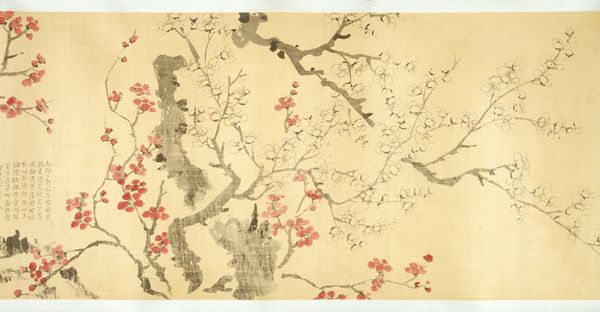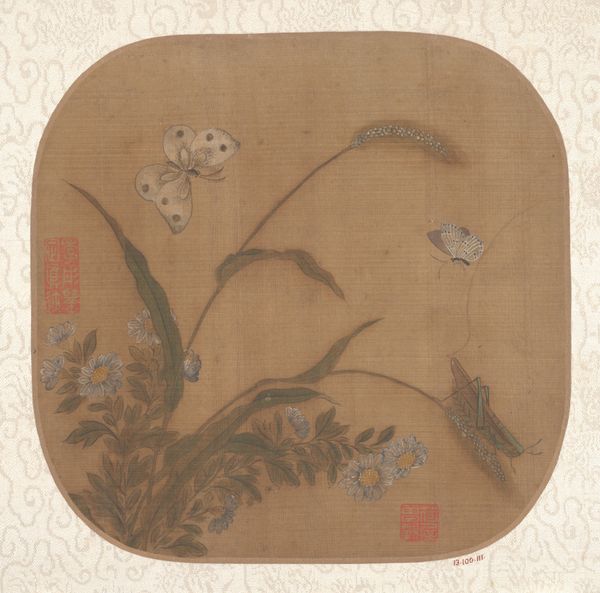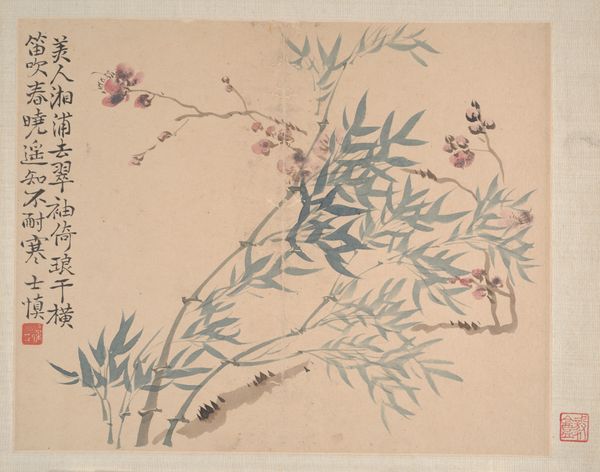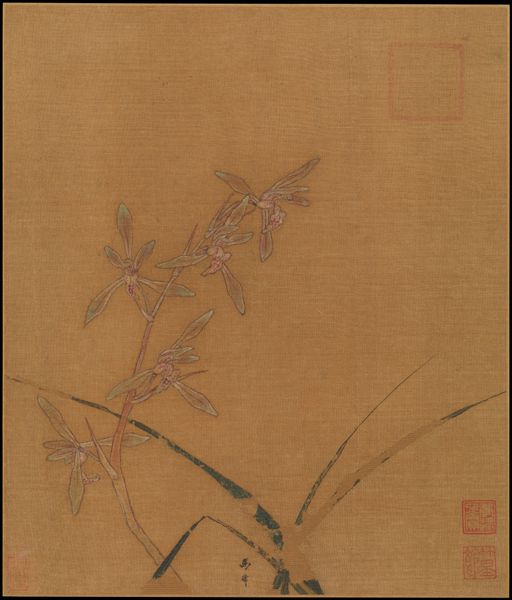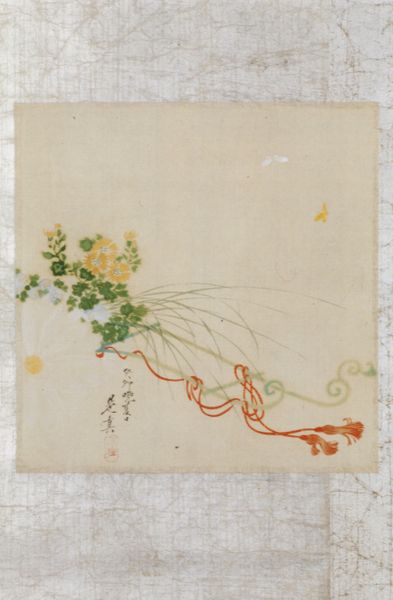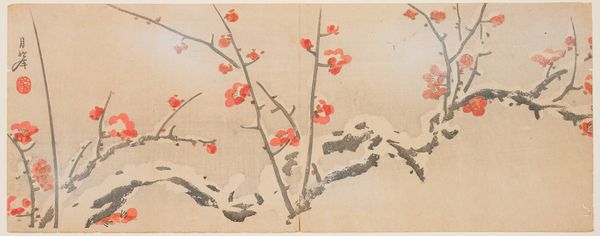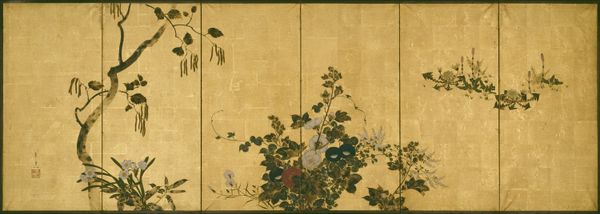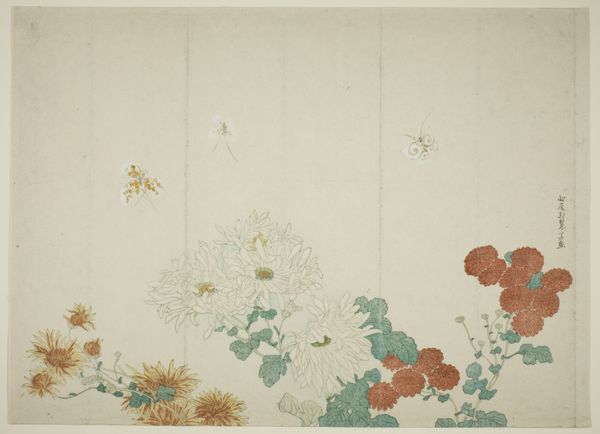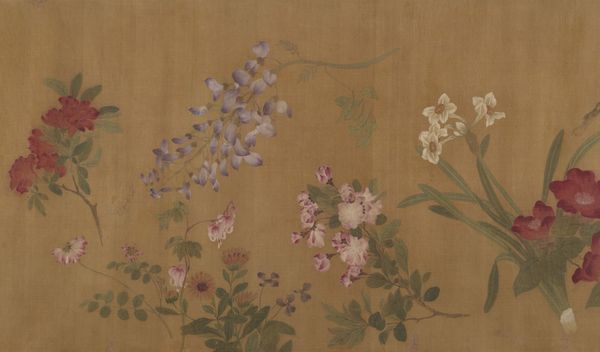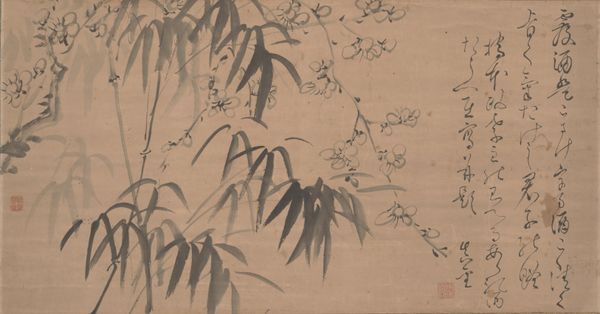
print, paper, woodblock-print
#
water colours
# print
#
asian-art
#
landscape
#
paper
#
linocut print
#
woodblock-print
#
botanical drawing
Dimensions: height 240 mm, width 251 mm
Copyright: Rijks Museum: Open Domain
Curator: Here we have Tsukioka Kōgyo's woodblock print "Herfst," likely created between 1890 and 1900, housed here at the Rijksmuseum. The title means "Autumn" in Dutch. Editor: It feels… delicate. Melancholy, even. The colors are so muted, almost faded. The composition makes you feel like you're peering into a quiet corner, observing nature as it fades. Curator: Exactly! The faded palette evokes a sense of transience, a common theme in Ukiyo-e prints. Notice how the artist uses the "bokashi" technique, the subtle gradations of color, particularly in the background, to create depth and mood. Editor: The falling leaves especially stand out. I see so much symbolism packed into this piece. Is there a particular cultural weight afforded to these falling leaves, given the historical context of Japan? Curator: Absolutely. In Japanese art and literature, falling leaves often symbolize impermanence, the fleeting nature of life, and the beauty in decay. It resonates deeply with Buddhist philosophies. Think of it as an illustration of "mono no aware" – the pathos of things. Editor: The placement of the plants, the grass especially, it feels very deliberate. They are presented at the bottom of the art piece as though they're pushing upwards to keep the plant and, metaphorically, life going. Curator: It speaks volumes about the tensions and changes happening in Japan at the time. Japan was rapidly modernizing, but artists like Kōgyo sought to preserve traditional aesthetics and philosophical ideas in woodblock prints such as these. These pieces acted as vehicles for cultural continuity. Editor: This wasn't just aesthetic preference. There was a quiet form of cultural preservation happening, a dialogue with the past amid profound social shifts. The popularity of "Japonisme" in Europe adds another layer. It's fascinating how art travels and how these prints circulated within a complex web of artistic exchange and national identity. Curator: Precisely, the themes speak across time and cultures. Now, every time I return to this piece, I appreciate how the falling leaves suggest a gentle resignation to the seasons, not despair. Editor: A very poignant perspective that I must keep in mind the next time I look at it! Thanks for your insight, a much needed deeper awareness of art's powerful connection with life!
Comments
No comments
Be the first to comment and join the conversation on the ultimate creative platform.
